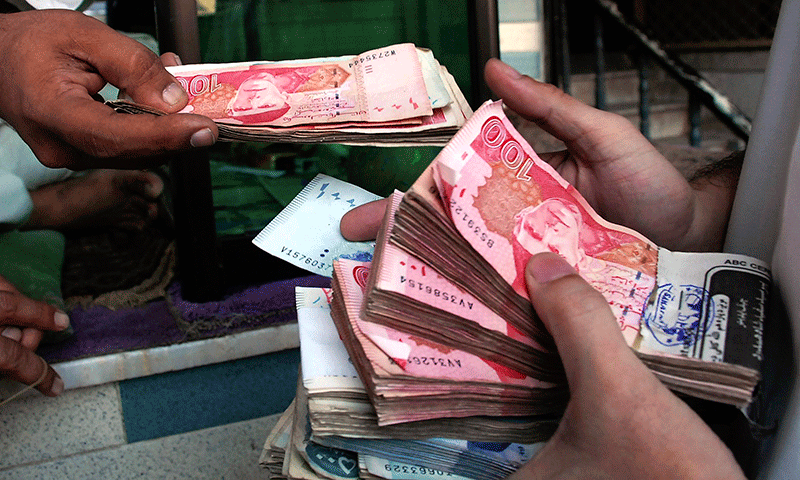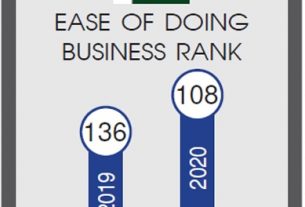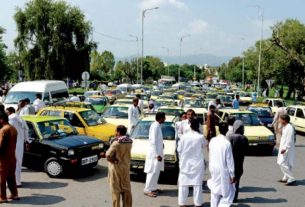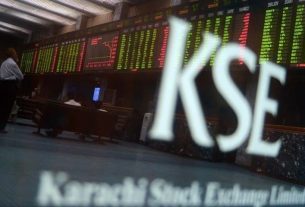The rupee lost about 4.6 per cent value within two days. In the interbank market, it closed at 147.88 a dollar on May 17, down from 141.40 on May 15 — a loss of Rs6.48.
On May 20, the State Bank of Pakistan (SBP) may or may not increase its policy rate further. It depends on how it factors in, among other things, the future inflationary impact of the rupee depreciation and the government’s skyrocketing borrowing from the central bank.
Chances are that it will continue monetary tightening. Since the beginning of this fiscal year, the rupee has lost 21.7pc value to the dollar. In 10 months and 10 days of 2018-19, the federal government’s borrowing from the SBP soared past Rs5.1 trillion from about Rs2tr in the same period a year ago. This borrowing is largely a byword for fresh note printing and, thus, very inflationary in nature. Headline inflation in April moderated to 8.8pc from 9.4pc in March, but the annualized Sensitive Price Index (SPI) went up to 12.4pc from 12pc, according to SBP data.
Even if we add home remittances to exports earnings, the total constitutes less than 82pc of our merchandise import bill
So further monetary tightening is expected. But then central banks love to surprise markets. After all, the SBP let the rupee slip in the interbank market on May 16-17. That was despite the nation’s expectation that the central bank would intervene to halt the rupee’s slide in the open market where the dollar, at one point, had shot up to Rs151 before closing around Rs150.
What had fuelled that expectation was a meeting held earlier between foreign exchange dealers and Prime Minister Imran Khan to discuss the reasons for the rupee’s humiliation in the open market.
But those days are gone when the SBP used to intervene in the market to maintain artificial exchange rates. Since January last year, it has left the rupee on its own and exchange rates have become more market-driven if not truly free. Between Jan 1, 2018 and May 17, 2019, the rupee has lost about 34pc value vis-à-vis the dollar.
During this time, the country has had difficulty in keeping SBP’s foreign exchange reserves at $10bn amidst drawdown pressures due to dollar payments of all kinds, including debt servicing. That was why it had to borrow billions of dollars from friendly countries — China, Saudi Arabia and the United Arab Emirates. And that is why it is now going to borrow $6bn from the IMF.
According to media reports, the IMF wants a freer float of the exchange rate, which means the central bank should not intervene in the market even when it goes jittery at times of lumpy fuel payments or heavy external debt servicing. Besides, calculations by the IMF show the rupee is still overvalued and there is room for its further depreciation against the dollar.
A large part of funds arranged from friendly countries has come to keep the central bank’s foreign exchange reserves from falling. Technically, drawing down on those funds for market intervention is possible because they are part of the reserves. But neither friendly countries nor the IMF can support an artificial exchange rate regime in Pakistan. So when interventions become necessary to curb volatility in the foreign exchange market, what should the SBP do?
The nation’s expectation was that the SBP would intervene to halt the rupee’s slide in the open market where the dollar shot up to Rs151
According to media reports not denied by the IMF or Pakistani officials, the international lender wants — and friendly countries don’t resist this idea — that the SBP should use a dedicated foreign exchange fund for occasional interventions in the market solely to curb extreme volatilities and as a means for maintaining an exchange-rate band.
More importantly, the IMF insists that at the end of every quarter, the SBP should not emerge as a net seller of dollars in the foreign exchange market. So far there is no official word as to when this dedicated fund will be created. But earmarking a separate fund for market interventions as such should not be a problem. The real problem is to ensure that the SBP squares off all its interventions at the end of the quarter.
That means the repurchase of dollars sold in the past 90 days. Currently, our foreign exchange market is too short of dollars to allow the SBP room for this otherwise healthy practice. The recent rupee depreciation should be seen as a step taken in this direction ahead of the formal signing of the $6bn IMF loan.
Pakistan’s external sector has been under severe pressure for quite some time. The gap between our total foreign exchange inflows and outflows is so vast that it cannot be bridged easily.
In the first nine months of this fiscal year, we had an overall balance-of-payments deficit of $1.34bn and a current account deficit of $9.59bn. For a moment, forget about the current account deficit during the same period of the last fiscal year and just think how this can be fixed at a time when our total goods imports are more than double our exports.
In July-April, merchandise exports fetched just $19.17bn or 42.15pc of total merchandise imports of $45.47bn, according to the Pakistan Bureau of Statistics. Even if we add $17.87bn of home remittances received in July-April to exports earnings, we get $37bn. Exports and remittances constitute less than 82pc of total imports.
So the SBP’s foreign exchange reserves are going to remain shallow — currently at $8.84bn, they are not enough to cover imports of even two months. The rupee is going to remain under pressure unless exports grow big and fast, growth in remittances continues and foreign direct investment increases many times. Is that going to happen without an elevated level of harmony in national politics — and without a shift towards hardcore economic management instead of political sloganeering? The replacement of the economic team indicates the PTI government — presumably under the IMF pressure — is now up for hardcore economic management. Let’s see!



